Order: Nudibranchia Cuvier, 1817 - Suborder: Cladobranchia
Family: Trinchesiidae F. Nordsieck, 1972
Trinchesia morrowae Korshunova, Picton, Furfaro, Mariottini, Pontes, Prkić, Fletcher, Malmberg, Lundin & Martynov, 2019
Specie decisamente comune in tutto il Salento, anche se le dimensioni molto piccole, raramente raggiunge 1 cm di lunghezza, spesso ne rendono complicata l'osservazione in natura. L'ambiente che predilige è quello degli Idroidi (Sertularella sp) ma è possibile individuarla anche su Porifieri. Definitely common throughout the Salento, even if the very small size, rarely reaches 1 cm in length, often making it difficult to observe in nature. The environment it prefers is that of the Hydroids (Sertularella sp) but it is also possible to identify it on Porifieri
|
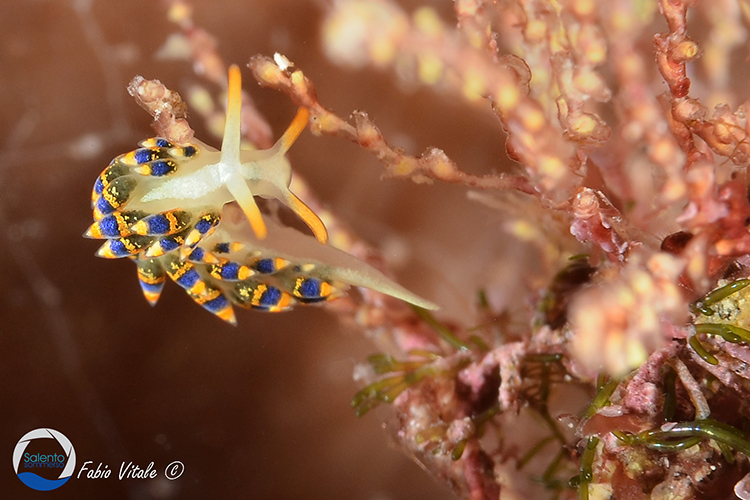 |
|
Nastro ovigero su Idrozoo
Egg ribbon on Idrozoo |
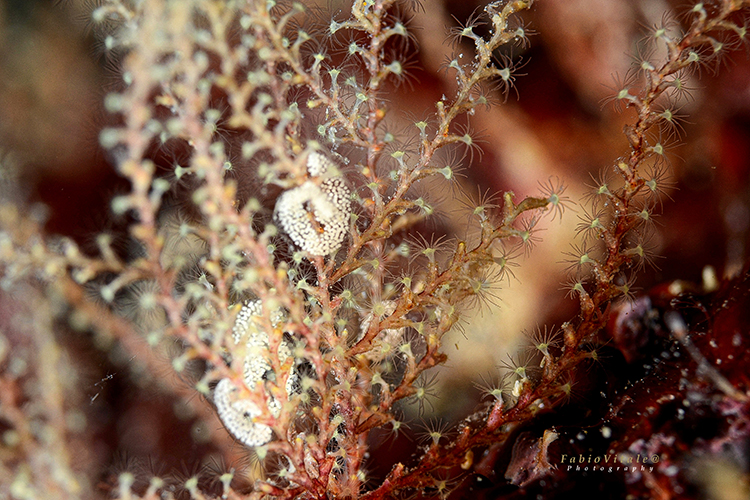 |
|
Eccezionale questa foto di Cataldo Licchelli che mostra l'accoppiamento di due esemplari. Exceptional this photo by Cataldo Licchelli that shows the mating of two specimens
|
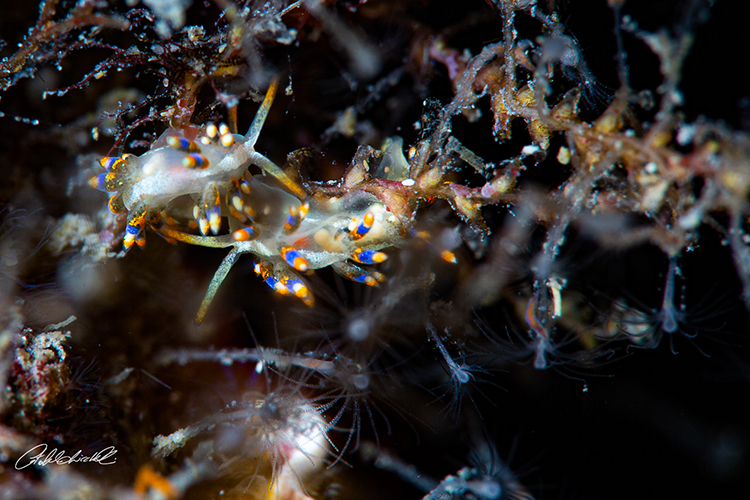 |
|
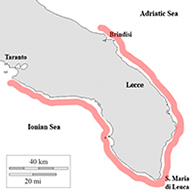 |
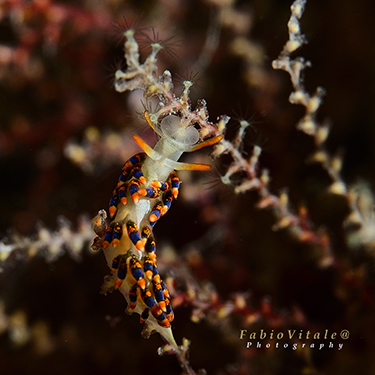 |
Altra immagine molto interessante questa a sinistra che immortala un esemplare mentre estroflette l'apparato buccale per risucchiarne dentro i polipi dell'Idrozoo di cui si ciba e sul quale vi depone i suoi nastri ovigeri. Another very interesting image on the left that immortalizes a specimen while it ejects the buccal apparatus to suck it into the polyps of the Hydrozoan it feeds on and on which it lays its ovigerous ribbons |
S. Maria al Bagno (Lecce, Italy), 5m depth. E' un posto che osserviamo costantemente lungo tutto il periodo dell'anno ed è il posto preferito da questa specie che nei mesi freddi di Feb-Mar di ogni anno si mostra in mumerosissimi esemplari. Poi lentamente gli stessi esemplari scompaiono per tornare ad essere numerosissimi e con una livrea abbastanza differente a Lug di ogni anno. Pensiamo possa essere una dei rari casi di una seconda generazione che questa specie costantemente genera ogni anno. L'esemplare a destra è tra quelli osservati a Luglio. It is a place that we observe constantly throughout the whole period of the year and it is the favorite place of this species which in the cold months of Feb-Mar of each year shows itself in very many specimens. Then slowly the same specimens disappear to return to being numerous and with a quite different livery in Lug each year. We think it may be one of the rare cases of a second generation that this species constantly spawns every year. The specimen on the right is among those observed in July
|
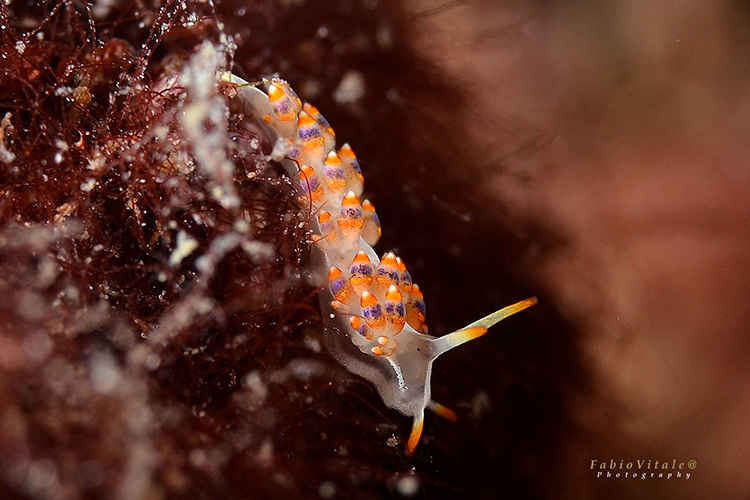 |
|
| Specimen observed 35m depth. | 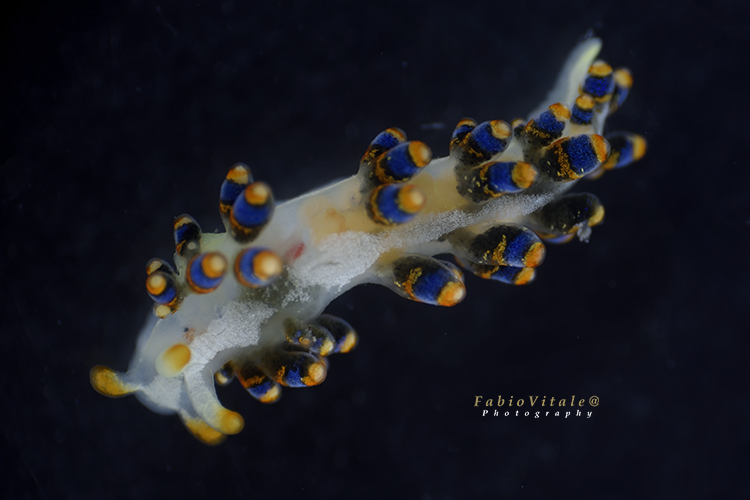 |
|
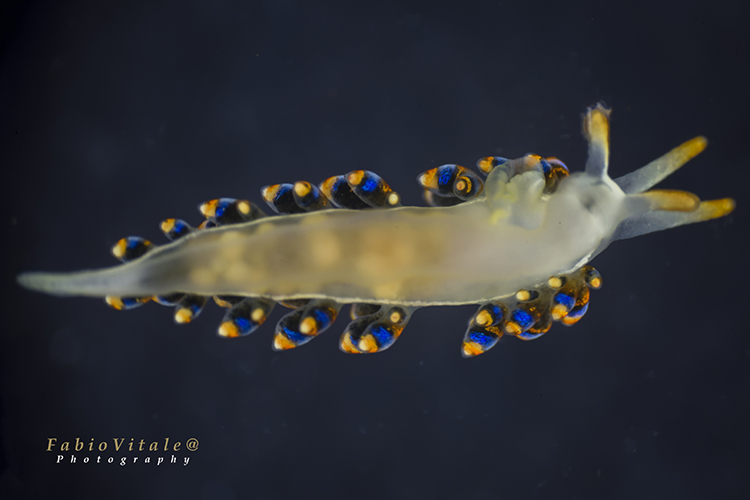 |
||
Bibliography Furfaro G., Vitale F., Licchelli C. e Mariottini P. 2020 Two Seas for One Great Diversity: Checklist of the Marine Heterobranchia (Mollusca; Gastropoda) from the Salento Peninsula (South-East Italy) Diversity 2020, 12, 171; doi:10.3390/d12050171 |
||
